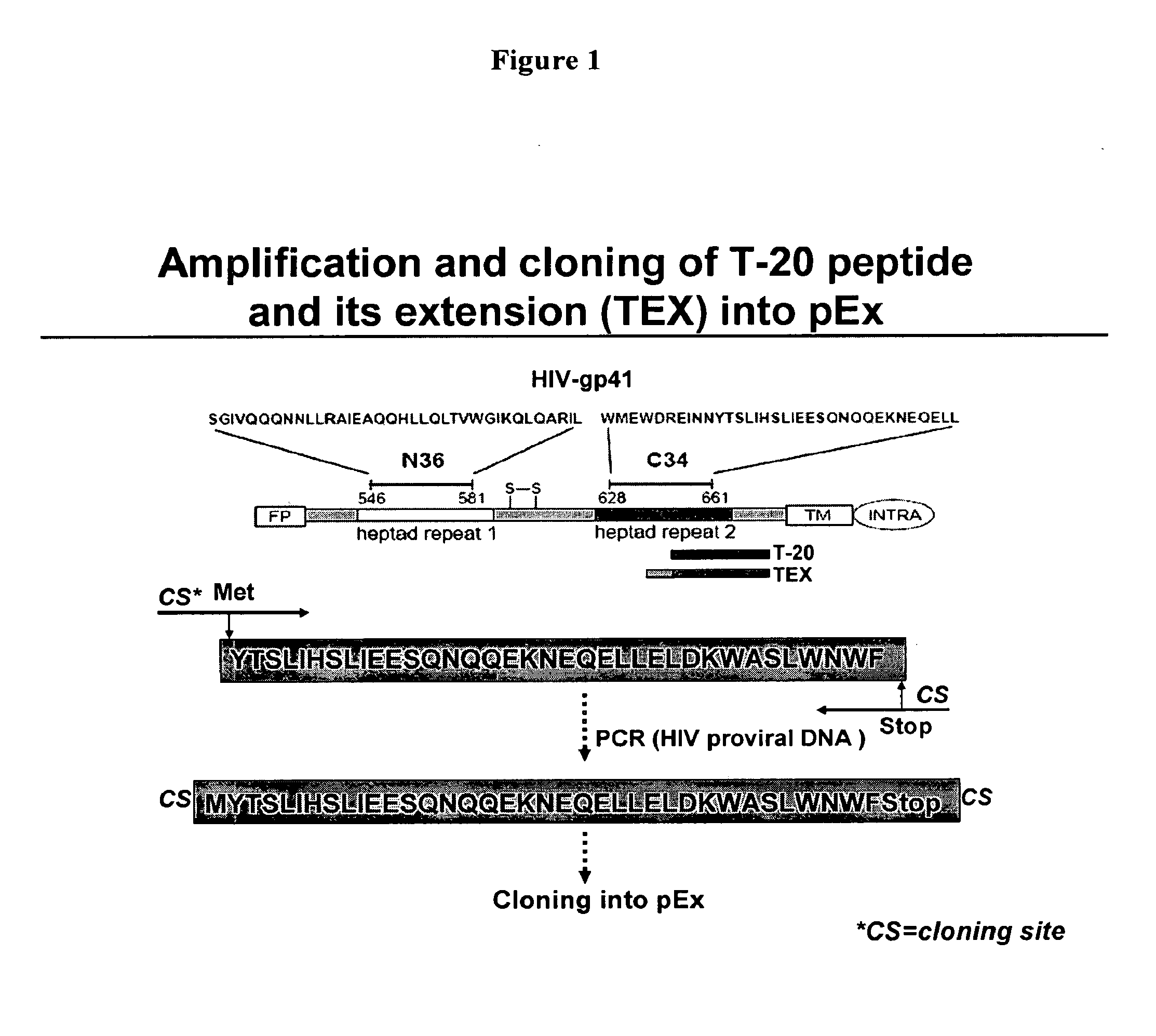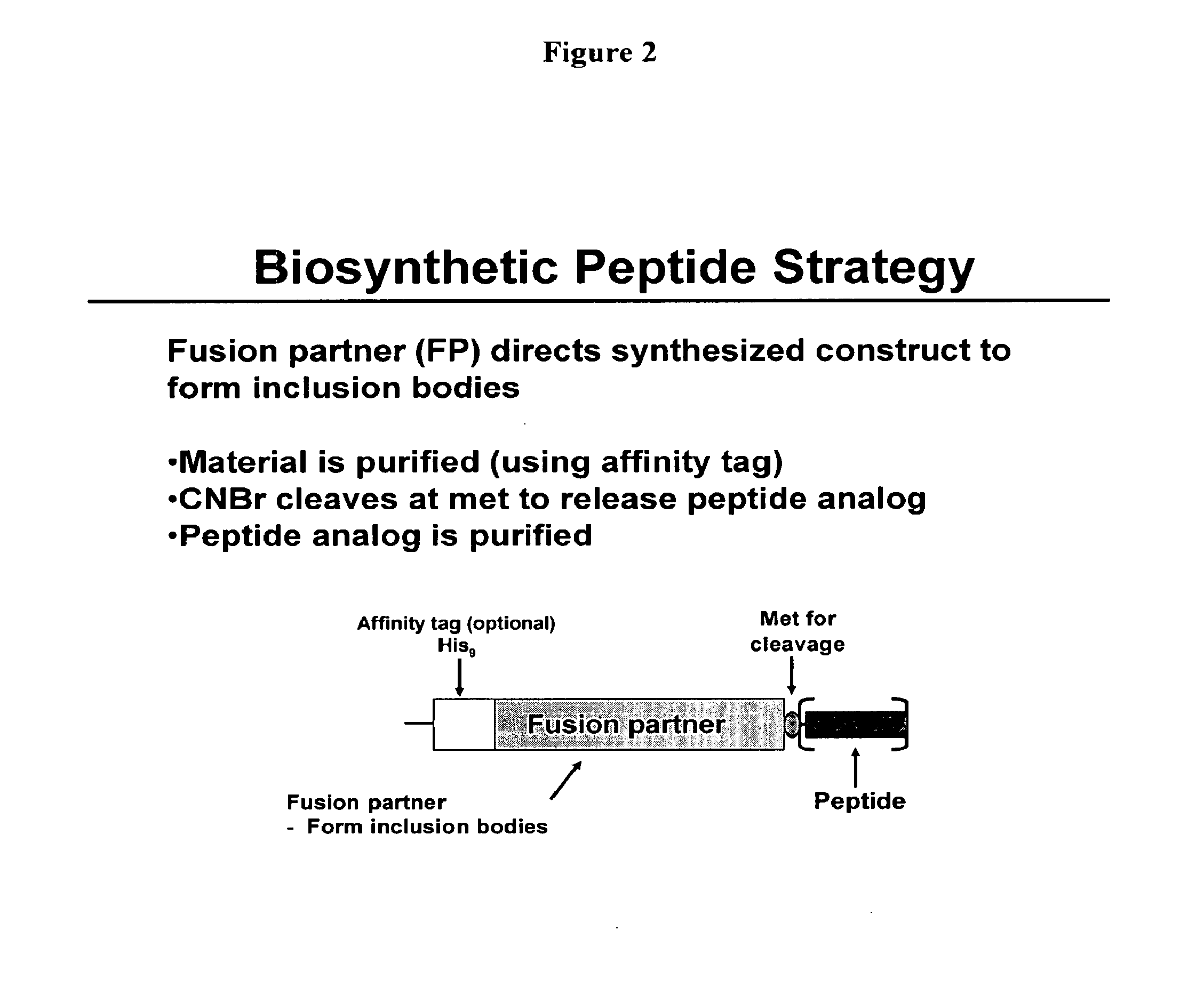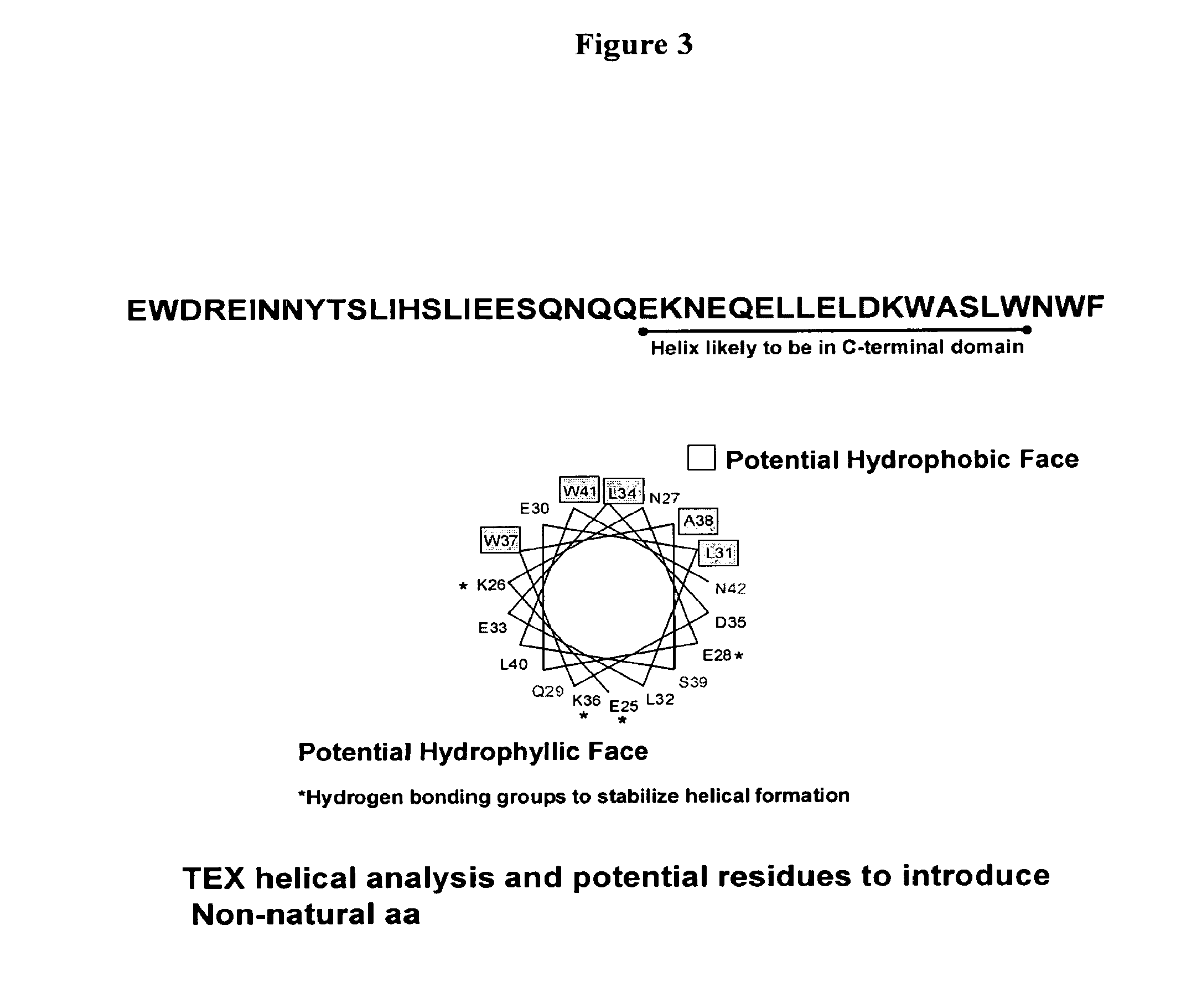Biosynthetic Polypeptide Fusion Inhibitors
a technology of biosynthetic polypeptides and inhibitors, applied in the direction of peptide/protein ingredients, peptide sources, applications, etc., can solve the problems of inconvenient clearance rate of therapeutic agents, high rate of degradation and/or clearance, and no effective treatment or vaccin
- Summary
- Abstract
- Description
- Claims
- Application Information
AI Technical Summary
Benefits of technology
Problems solved by technology
Method used
Image
Examples
example 1
[0520]This example describes a few of the many potential sets of criteria for the selection of preferred sites of incorporation of non-naturally encoded amino acids into a BPFI. An optimal HR-C derived peptide candidate is designed. Criteria such as peptide expression, stability, helical propensity, and anti-viral activity are assessed to identify an optimal RSV peptide fusion inhibitor. Peptides optimal for helix formation upon a computer based analysis of the amino acid sequences are cloned into the expression vector. The peptides of variable lengths are produced biosynthetically within the HR-C region of RSV F protein (position from 474 to 523). A fraction of the peptides are engineered to have enhanced helical propensity using known helix favoring strategies including helix end capping, tryptophan cages and salt bridge formation. The DNA coding region of each single peptide carrying specific restriction sites are commercially synthesized for rapid cloning into an expression vect...
example 2
[0524]This example details expression of BPFI including a non-naturally encoded amino acid in E. coli.
[0525]An introduced translation system that comprises an orthogonal tRNA (O-tRNA) and an orthogonal aminoacyl tRNA synthetase (O-RS) is used to express BPFI containing a non-naturally encoded amino acid. The O-RS preferentially aminoacylates the O-tRNA with a non-naturally encoded amino acid. In turn the translation system inserts the non-naturally encoded amino acid into BPFI, in response to an encoded selector codon.
TABLE 2O-RS and O-tRNA sequences.SEQ ID NO:2M. jannaschii mtRNACUATyrtRNASEQ ID NO:3HLAD03; an optimized amber supressor tRNAtRNASEQ ID NO:4HL325A; an optimized AGGA frameshift supressor tRNAtRNASEQ ID NO:5Aminoacyl tRNA synthetase for the incorporation of p-azido-RSL-phenylalanine p-Az-PheRS(6)SEQ ID NO:6Aminoacyl tRNA synthetase for the incorporation of p-benzoyl-RSL-phenylalanine p-BpaRS(1)SEQ ID NO:7Aminoacyl tRNA synthetase for the incorporation of propargyl-RSph...
example 3
[0526]This example details introduction of a carbonyl-containing amino acid and subsequent reaction with an aminooxy-containing PEG.
[0527]This Example demonstrates a method for the generation of a BPFI that incorporates a ketone-containing non-naturally encoded amino acid that is subsequently reacted with an aminooxy-containing PEG of approximately 5,000 MW. For example, each of the residues in a BPFI is separately substituted with a non-naturally encoded amino acid having the following structure:
[0528]The sequences utilized for site-specific incorporation of p-acetyl-phenylalanine into BPFI and SEQ ID NO: 2 (muttRNA, M. jannaschii mtRNACUATyr), and 14, 15 or 16 (TyrRS LW 1, 5, or 6) described in Example 2 above.
[0529]Once modified, the BPFI variant comprising the carbonyl-containing amino acid is reacted with an aminooxy-containing PEG derivative of the form:
R-PEG(N)—O—(CH2)n—O—NH2
where R is methyl, n is 3 and N is approximately 5,000 MW. The purified BPFI containing p-acetylpheny...
PUM
| Property | Measurement | Unit |
|---|---|---|
| molecular weight | aaaaa | aaaaa |
| molecular weight | aaaaa | aaaaa |
| molecular weight | aaaaa | aaaaa |
Abstract
Description
Claims
Application Information
 Login to View More
Login to View More - R&D
- Intellectual Property
- Life Sciences
- Materials
- Tech Scout
- Unparalleled Data Quality
- Higher Quality Content
- 60% Fewer Hallucinations
Browse by: Latest US Patents, China's latest patents, Technical Efficacy Thesaurus, Application Domain, Technology Topic, Popular Technical Reports.
© 2025 PatSnap. All rights reserved.Legal|Privacy policy|Modern Slavery Act Transparency Statement|Sitemap|About US| Contact US: help@patsnap.com



